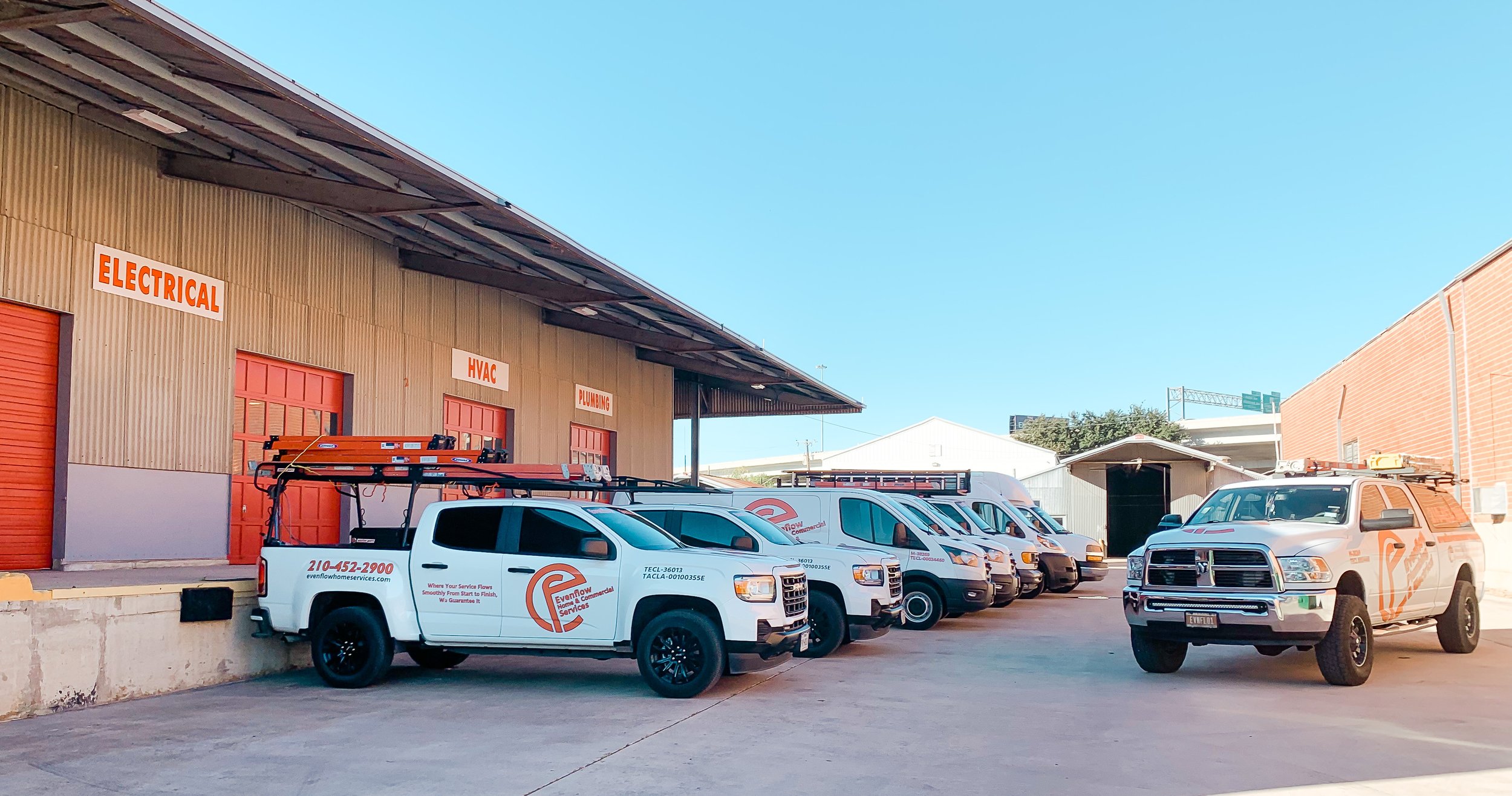
Furnace Gas Valve Replacement in San Antonio, Schertz, Converse, Floresville, Elmendorf, New Braunfels, and Surrounding Cities
A furnace’s fuel system comprises several components, and the gas valve is arguably the most important one. It opens and closes, allowing gas to reach the burners and the pilot light. Although the component’s structure is relatively simple, it ensures that the HVAC system operates without issue.
Two smaller valves form a furnace gas valve. The safety valve carries gas to the pilot light, while the main valve ensures gas travels to the burner trays. Furnace gas valves feature a safety mechanism called the thermopile or thermocouple. It keeps the safety valve open and prevents gas from entering the home.
When the valve registers the thermostat’s command for heat, it opens and closes, maintaining comfortable temperature levels throughout the home.
Homeowners often worry about replacing faulty gas valves. Furnace gas valve replacement costs depend on the component’s make and model. Additionally, the location of the home and labor costs may affect the overall pricing.
Although some assume they can troubleshoot HVAC gas valve replacement issues without professional assistance, this can result in further damage and time-consuming repairs. The best option is to schedule a consultation with an experienced HVAC specialist to discuss the issue.
But how do homeowners know they’ve chosen the best service provider? Ideally, look for a company that has worked with different makes and models and has numerous positive reviews.
If they’ve handled Lennox, Honeywell, or Goodman furnace gas valve replacement projects, they’ve got the necessary expertise. A reliable business should employ several experts who have completed numerous commercial and residential jobs.
Why Furnace Gas Valves Fail
If the furnace fails to produce heat, homeowners may have a faulty gas valve on their hands. The most common reasons a gas valve malfunctions are:
Gas valve wires: Frayed or cracked wires may signify that the furnace is near the end of its service life. Alternatively, an underlying issue has scorched the wiring. If the wires look damaged, call a professional with the tools and experience to replace them.
Gas valve coil: Testing the coil’s resistance with two-meter leads may diagnose the problem. If the result is “OL,” the coil is the source of the issue.
Ignition source: An electronic furnace ignition is a safe system, but it can still malfunction from time to time. If it fails to activate and produces persistent clicking noises, switch off the furnace. A professional can clean dirt and debris from the igniter and the surrounding areas. They’ll remove the carbon buildup preventing the igniter from turning on.
Inconsistent flame: The gas furnace regulator or flame sensor might not register the flame. Low gas pressure may be another cause.
Ductwork: Crushed return ducts obstruct airflow and could suffocate the furnace. Another issue may be a dirty air filter. Make sure to change the filters at least every three months.
SPECIAL OFFER
REVIEWS

Cities We Serve
San Antonio, Lakehills, Vernia, Mico, Castroville, Stockdale, New Braunfels, D'Hanis, Marion, Floresville, Bulverde, Shavano Park, Leon Valley, Castle Hills, Schertz, Selma, Boerne, Fair Oaks Ranch, Live Oak, Adkins, Lytle, Saint Hedwig, Terrell Hills, Converse, Elmendor, Pipe Creek, Rio Medina, Natalia, Devine, Atascosa, Somerset, Von Ormy, Macdona, Poteet, Leming, Sandy Oaks, Saspamco, Helotes, St Hedwig, Sutherland Springs, La Vernia, New Berlin, McQueeney, Timberwood Park, Garden Ridge, Bracken, Balcones Heights, Santa Clara, Hollywood Park, Alamo Heights, Kirby and Surrounding Areas
San Antonio Neighborhoods We Serve
Government Hill, Southtown, Lavaca, Monte Vista, Five Points, North San Antonio Hills, Eastside Promise Neighborhood, Tobin Hill, Mahncke Park, Oak Hills, Midtown, East Side, Woodlawn Lake, Alta Vista, Dominion, Uptown, Northern Hills, Hills and Dales, Dignowity Hill, Villa De San Antonio, Valencia, Northern Heights, Central Los Angeles Heights, The Heights at Stone Oak, Spring Creek, North Central Thousand Oaks, Denver Heights, King William, Lackland Terrace, Santa Fe Trails, Valley High North, Avenida Guadalupe, Vista Del Norte, Eden, Inner West Side, Memorial Heights, Gardendale, Inspiration Hills, Northhampton, Los Jardines, Highland Park, Edgewood, Northchase, Ridgehaven, Woodlake, Dellview, North Castle Hills, Oakland Estates, Elm Creek, Village at Big Country, McCreless Meadows, Rainbow Hills, Harvard Palace / Eastlawn, Hunters Mill, Towne Lake, Park Forest, Shearer Hill / Ridgeview, Greater Gardendale, Cable Westwood, Thelka, Loma Park, Skyline Park, Westwood Village, Highland Forest, Redland Woods, Pecan Valley Heights, Oak Haven Heights, Sonoma Ranch, Randolph Hills, Deerfield, Timber Ridge, Mountain View Acres, French Creek, Whisper Hollow, Redland Springs, Knoolcreek, Encino Ranch, Bluffview at Camino Real, Blanco Woods, Encino Park, River Rock Ranch, Misty Oaks, Coolcrest, Eastwood Village, Lorrence Creek, Shavano Gardens, Sunshine Estates, Far West Side, El Chaparral Fertile Valley, Greater Harmony Hills, East Pyron, Brady Gardens, Chrchill Forest, Fairways of Woodlake, Green Spring Valley, Emerald Forest, Oak Meadows, Cavalo Creek Estates, Greystone County Estates, Canyon Creek Village, Valley Forge, Oakmont Downs, Jake Oaks, Trophy Ridge, Pipers Meadow, Dreamhill Estates, Crownhill Park, Woodlawn Hills, Woodland Heights, Thunderbird Hills, Palm Heights


